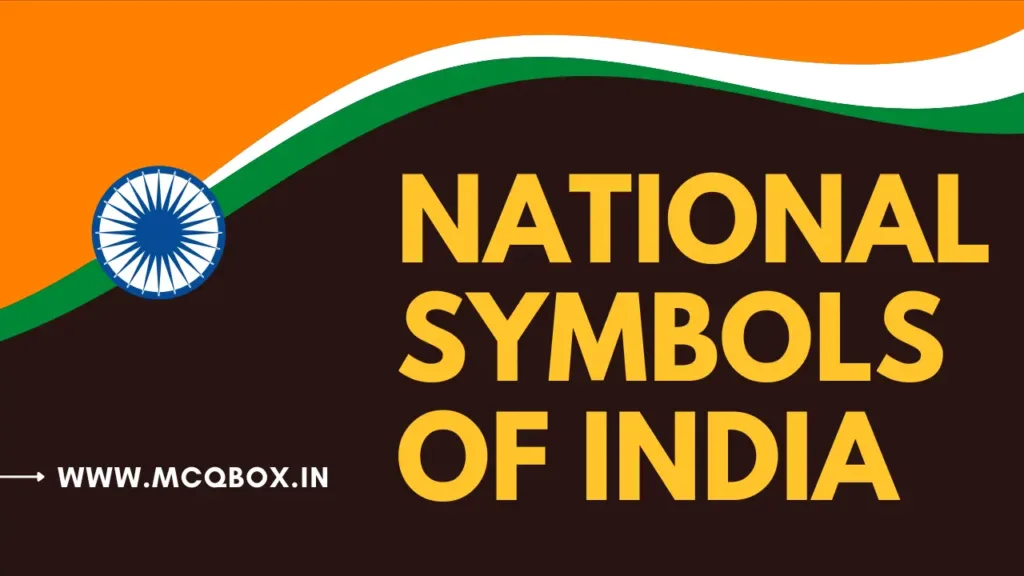National symbols of India hold immense importance as they become the visual and auditory representation of a nation’s identity. In the context of India, these symbols are not just emblems; they are a mirror reflecting the country’s glorious past and its dynamic present. Let’s delve into the vibrant array of national symbols that adorn the Indian identity.
India, a land of diversity and ancient civilizations, boasts a rich tapestry of national symbols that reflect its unique heritage and identity. From the tricolor fluttering in the breeze to the soul-stirring national anthem, each symbol captures a piece of India’s history, culture, and values.

List of National Symbols of India
| National Symbol | Representation |
| National Flag | Tiranga |
| National Emblem | National Emblem of India |
| National Anthem | Jana Gana Mana |
| National Calendar | Saka calendar |
| National Song | Vande Mataram |
| National Fruit | Mango |
| National River | Ganga |
| National Animal | Royal Bengal Tiger |
| National Tree | Indian Banyan |
| National Aquatic Animal | Ganges River Dolphin |
| National Bird | Indian Peacock |
| National Currency | Indian Rupee |
| National Heritage Animal | Indian Elephant |
| National Flower | Lotus |
| National Vegetable | Pumpkin |
National Flag: Tiranga
The Indian tricolor, known as the Tiranga, has a deep-rooted history dating back to the struggle for independence. Each color – saffron, white, and green – holds a profound meaning, symbolizing courage and sacrifice, peace and truth, and faith and valor, respectively.
- Saffron: Represents courage and sacrifice.
- White: Signifies peace and truth.
- Green: Symbolizes faith and valor.
Ashoka Chakra: A Symbol of Dharma:
The 24-spoke navy blue Ashoka Chakra in the center signifies the wheel of dharma, embodying the principles of righteousness and duty.
National Anthem: Jana Gana Mana
Written by Nobel laureate Rabindranath Tagore, “Jana Gana Mana” has evolved through history, echoing the spirit of unity in diversity during India’s struggle for independence.
National Emblem: Sarnath Lion Capital
The Sarnath Lion Capital, originally erected by Emperor Ashoka, symbolizes the Buddhist principles of peace and non-violence.
The four Asiatic lions supporting the Dharma Chakra represent power, courage, confidence, and pride.
The unity of four lions symbolizes the strength found in diversity, a crucial aspect of India’s cultural ethos.
National Song: Vande Mataram
“Vande Mataram,” penned by Bankim Chandra Chattopadhyay, holds literary and emotional significance.
The song played a pivotal role in India’s freedom struggle, becoming a rallying cry for nationalists.
Despite controversies, “Vande Mataram” continues to be an integral part of India’s cultural tapestry, resonating in various forms of art and literature.
National Bird: Indian Peafowl (Peacock)
The vibrant and elegant Indian peafowl, or peacock, holds deep symbolism in Hindu mythology, associated with Saraswati, the goddess of wisdom.
The peacock’s dance symbolizes beauty, grace, and the vibrant colors of India’s diverse culture.
Efforts to conserve this magnificent bird are crucial to preserving not only a national symbol but also a key aspect of India’s biodiversity.
National River: Ganges
The Ganges, revered as the holiest river in Hinduism, holds immense spiritual significance for millions of Indians.
The Ganges is not just a river; it is a spiritual lifeline, central to rituals and beliefs.
The challenges of pollution and over-extraction necessitate robust conservation initiatives to protect this vital national symbol.
National Flower: Lotus
The lotus, with its roots in the mud and blossoming above the water, symbolizes purity and spiritual awakening.
The lotus is often associated with purity, enlightenment, and divine beauty.
Its representation in art and architecture across the country reflects its cultural importance.
National Animal: Bengal Tiger
The Bengal Tiger, India’s national animal, embodies strength, grace, and power.
The Royal Bengal Tiger is not just a symbol; it is a majestic species that needs conservation efforts.
Initiatives like Project Tiger are crucial for the survival and thriving of this national treasure.
Also See – Indian States and Capital Quiz